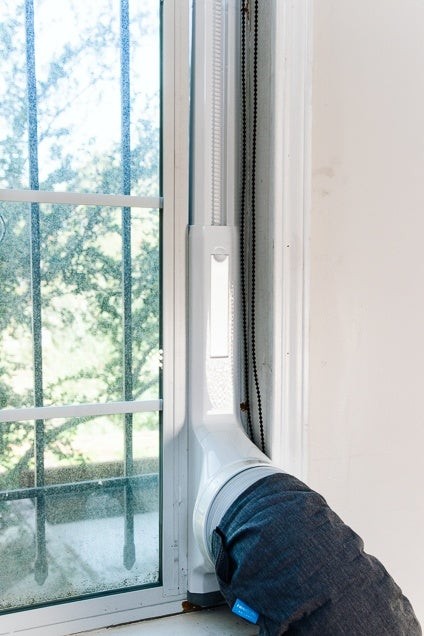Portable air conditioners have seen a surge in popularity, challenging the long-held dominance of window units. While window ACs remain a popular choice for cooling, recent advancements in portable technology have made them a viable alternative for many. This article breaks down the key differences between portable and window air conditioners to help you determine the best option for your needs.
Window AC Units: Advantages and Disadvantages
Window air conditioners are generally the more affordable, efficient, and effective cooling solution. They excel in cooling specific rooms quickly and effectively. Their simple installation, requiring only a compatible window, makes them a convenient choice for many homeowners.
However, window ACs have limitations. They require specific window types, typically single or double-hung, and can be challenging to install in sliding windows, casement windows, or windows with obstructions. Their weight can also make installation difficult, often requiring two people and potentially AC brackets for support.
Portable AC Units: Benefits and Drawbacks
Portable air conditioners offer greater flexibility for various window types and situations. They can be used in sliding windows, casement windows, and even sliding patio doors with the appropriate hardware kit. This makes them an attractive option for renters or those living in buildings with restrictions on window unit installations. They can also be easier to move and store, thanks to their caster wheels.
Despite their versatility, portable ACs typically come at a higher price point and offer slightly lower cooling performance compared to window units. They also require venting through a window, which, although easier to manage than a full window unit installation, can still be somewhat cumbersome. Additionally, portable units tend to be bulkier and require floor space within the room.
When to Choose a Portable AC Unit
While window units are often the default choice, several scenarios make portable ACs a better fit:
- Non-standard windows: If your windows are not compatible with a traditional window unit, a portable AC offers a workable solution.
- Building restrictions: HOA rules or local laws may prohibit window AC units, making a portable unit the only option.
- Installation challenges: The weight and size of window units can make installation difficult, particularly for individuals living alone. Portables, while heavy, are easier to maneuver with their casters.
- Supplemental cooling: Portable ACs are ideal for spot cooling or supplementing a central HVAC system in specific rooms.
- Window accessibility: If you prefer to open your windows frequently, a portable unit’s vent is easier to remove and reinstall compared to a window unit.
Key Considerations: SACC vs. BTU
When comparing cooling power, it’s important to understand the different rating systems. Window ACs use British Thermal Units (BTUs), while portable ACs now utilize Seasonally Adjusted Cooling Capacity (SACC). Due to differences in efficiency, a 12,000 BTU window unit will cool a larger space than a 12,000 BTU portable unit. SACC provides a more accurate measure for portable AC performance, and we recommend prioritizing SACC ratings when choosing a portable unit.
 A portable air conditioner with a hose venting out a window.
A portable air conditioner with a hose venting out a window.
Conclusion: Finding the Right AC for You
Choosing between a portable and window air conditioner depends on your individual needs and circumstances. Window units generally offer superior cooling power and efficiency at a lower cost. However, portable units provide flexibility for various window types, installation challenges, and supplemental cooling needs. By considering these factors and understanding the different rating systems, you can make an informed decision to stay cool and comfortable during the hot summer months.
